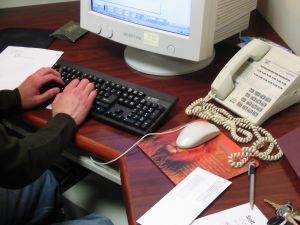 Being healthy does not make you impervious to serious accidents and injuries. In dangerous environments, caution and good judgement will get you a lot further than exercise and a healthy diet. In a typical office space, people are more concerned about health than safety, assuming there are no major safety issues in a cube farm. They couldn’t be more wrong.
Being healthy does not make you impervious to serious accidents and injuries. In dangerous environments, caution and good judgement will get you a lot further than exercise and a healthy diet. In a typical office space, people are more concerned about health than safety, assuming there are no major safety issues in a cube farm. They couldn’t be more wrong.
There is a lot the goes into maintaining a safe workplace. However, nothing you do can eliminate all workplace risks. Sometimes bad things are going to happen. To keep things going from bad to worse, you need to know what to do in a tense situation. Here are a few tips to get you started:
Assess and Treat
Most workplace accidents are minor. But minor issues can become big issues in a hurry if left untreated. Cuts, burns, and sprains are quite common. Less common but more serious is choking. All of these things can be treated by just about anyone. What is required are basic observational skills and the application of first aid.
It is a good idea for all employees and contractors to go through first aid training. Once trained, everyone needs to know where to find first aid supplies. It is imperative that companies keep those supplies well stocked and the employees well informed.
While it is important to put burn cream on a burn, stop the bleeding, and wrap a sprain as quickly as possible, it is even more important to apply CPR in a timely manner. There may not be time to call the one person in the office who knows how to do it. Everyone needs to be empowered to assess and treat the little things so they don’t turn into big ones.
Assess and Report
Are you starting to notice a pattern? The first thing to be done in every emergency is to assess. You should never go leaping into action like Supergirl before you even know what the situation calls for. When someone is on the floor crying out in pain, you don’t know if the situation is serious or not.
Even if you are not versed in emergency protocol, there is still something useful you can do. You can ask the person about the problem. If they have a recurring condition, they will tell you what you need to know. If you can’t get useful information from the person in pain, you need to alert a supervisor about the matter.
Calling 911 should not be the first thing you do if the situation doesn’t require it. Don’t just go running and screaming and adding panic to the situation. Get useful information about the problem, then report it.
Assess and Prevent
A hazard for one person is a hazard for all. There is no reason to allow a spill to claim two victims instead of one. Part of your assessment is to see that the floor is wet. While you are on the way to the person on the floor, you should grab the safety sign and set it up so that no one else slips.
Prevention is everyone’s job. If you see a stack of cups and plates precariously balanced, you don’t stack yours on top like a game of kitchen Jenga. You make smaller stacks. Perhaps you could even start the dishwasher. If you see a spill, don’t leave it for the next person. Clean it up. If someone left a sharp knife out, put it away.
By assessing the emergency at hand, you are in a good position to prevent the next one. In an emergency, the second thing you do always depends on the first thing. And the first thing you should do is make a level-headed assessment of the situation to see if treatment or reporting is required.
Emergencies happen fast, and so do mistakes. Slow it down, figure it out. Then do the right thing.
– Submitted by Katherine Smith
